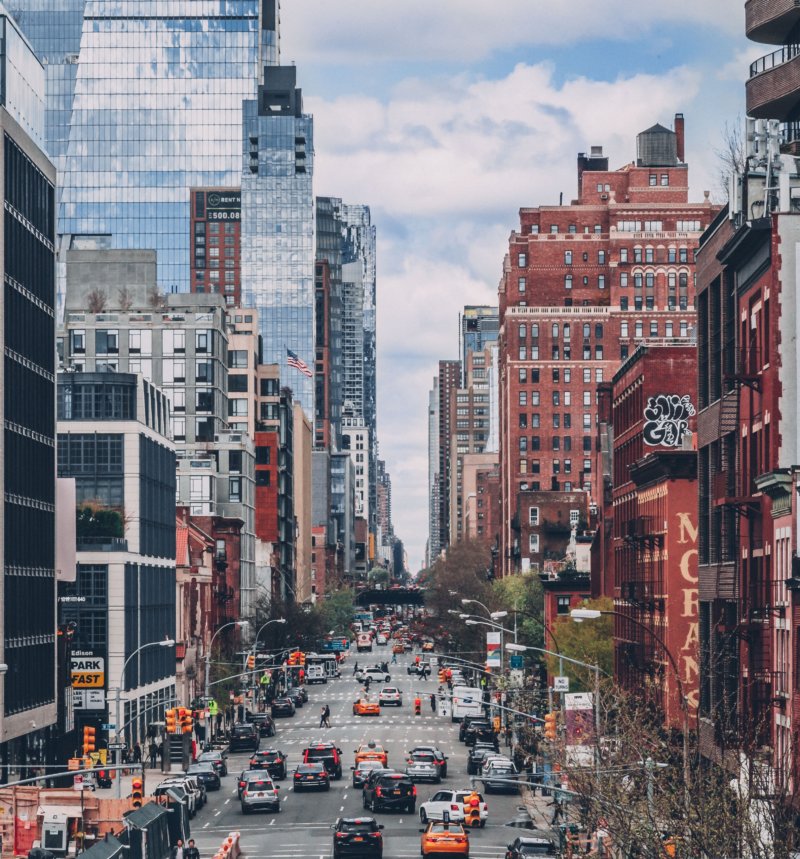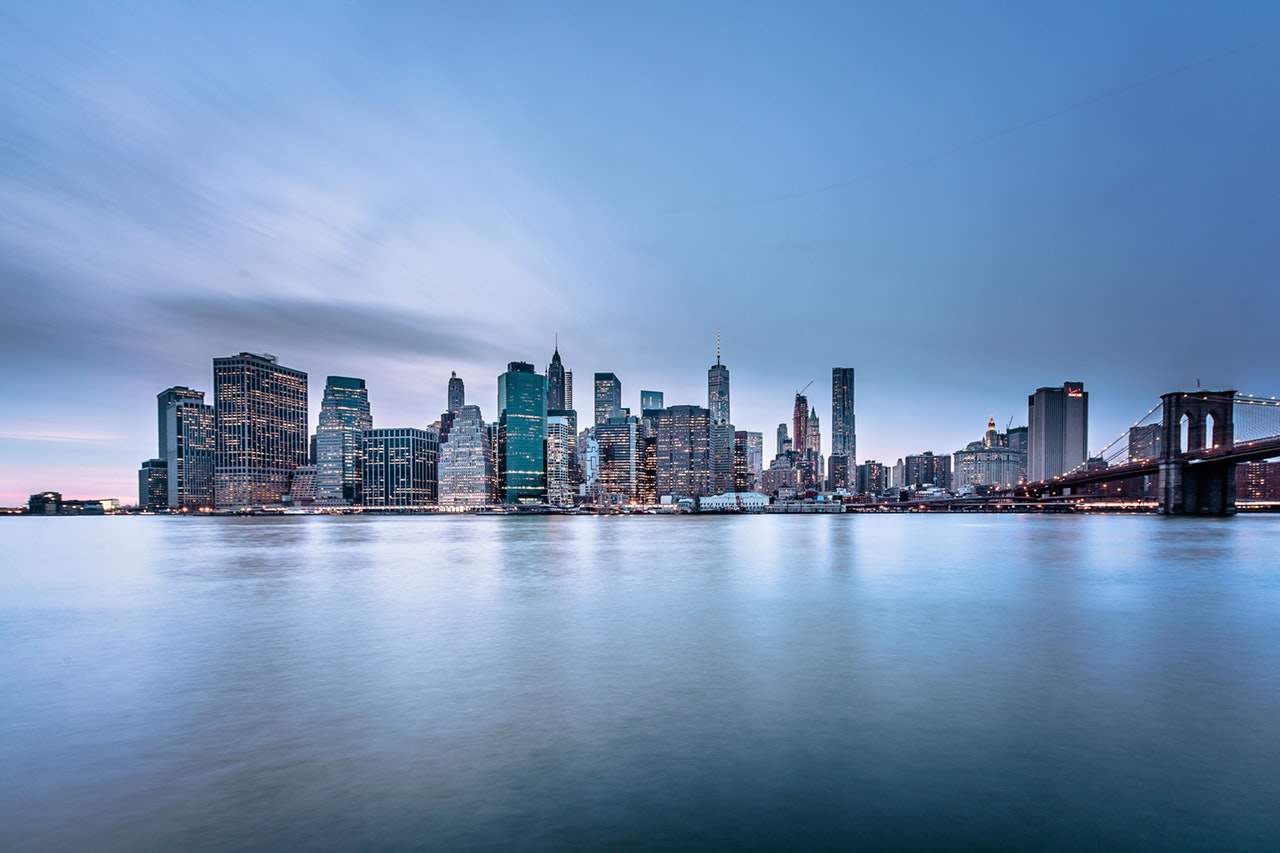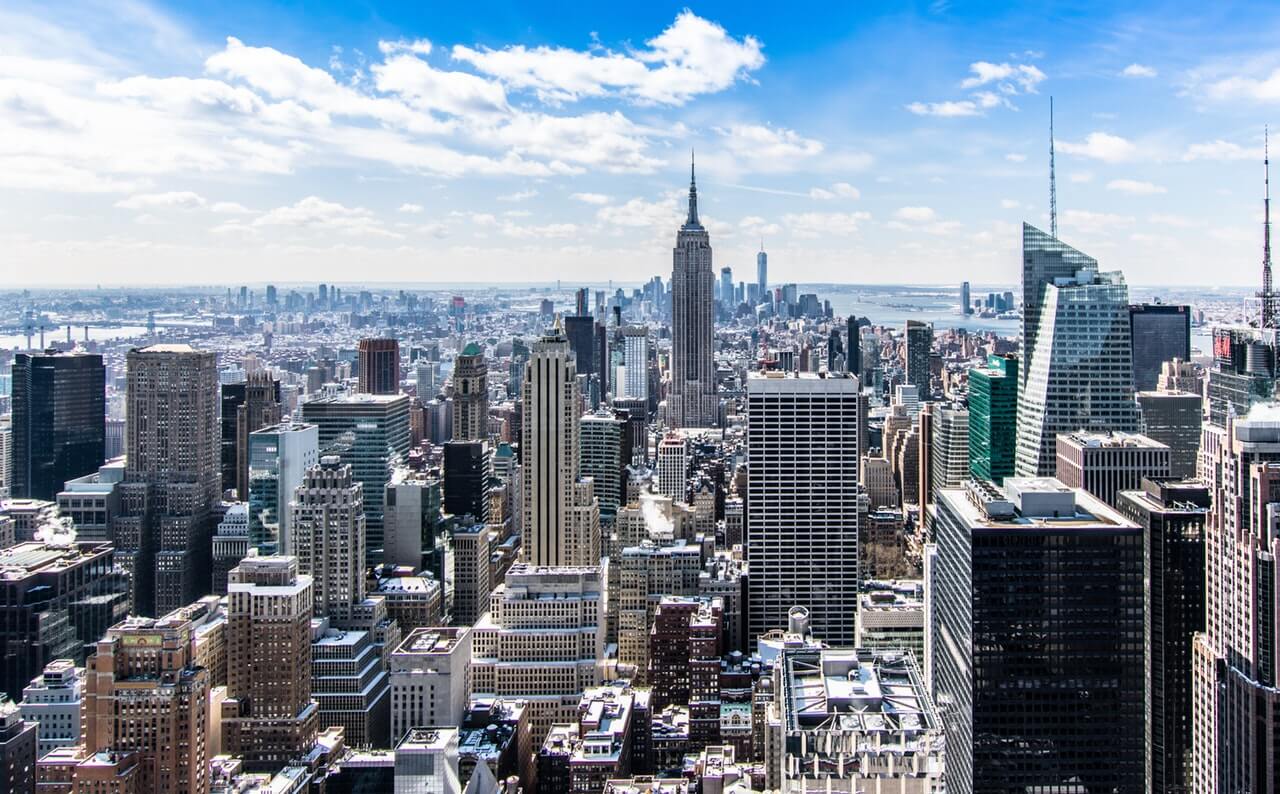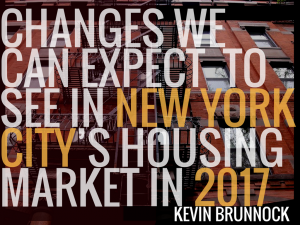When you think “New York City architecture”, you probably immediately picture towering skyscrapers that reign over the city with all glass windows. You aren’t wrong, but if you look closer you’ll start to see several addresses transforming their facades in a new and exciting way. More and more architects are reimagining what buildings throughout NYC should look like. Many real estate addresses are taking a blended approach, giving a nod to the past while bringing the building into the future. Here are five of these innovative buildings you can search for the next time you find yourself in the Big Apple.
Prospect Leffert Gardens, Brooklyn
This 467-unit luxury rental building still boasts a glass facade, but incorporates brownstone-esque bay windows, precast concrete, and a chevron pattern to give homage to the surrounding architecture. The result is a stunningly unique place to live in Brooklyn if you’re looking for something both modern and traditional.
Oskar, Hell’s Kitchen, Manhattan
This luxury rental fuses modern glass and shapes with old-school masonry. The building features a rounded glass form but incorporates the traditional with white terracotta wrapped around the facade. While it blends well within its surroundings, its impressive fusion of modern and traditional elements set it apart, making it a unique find within New York’s real estate market.
11 Hancock, Harlem, Manhattan
This building, by far, has the most powerfully modern shape, but the traditional aspects are certainly there to make it stand out above the rest. The 12-story cantilevered structure offsets its modern shape by combining glas, steel, brick, and burnished copper, all paying tribute to different eras of construction in the city.
40 Bleecker, NoHo, Manhattan
Manhattan has no shortages of condos, but not all condos are made equally. This 12-story building sits in a landmark-rich neighborhood. The architects wanted to do something different but not so different the building would stand out as an eye sore. This address features a brick and metal facade with punched-glass window openings to give homage to the pre-war buildings that dominate the area.






